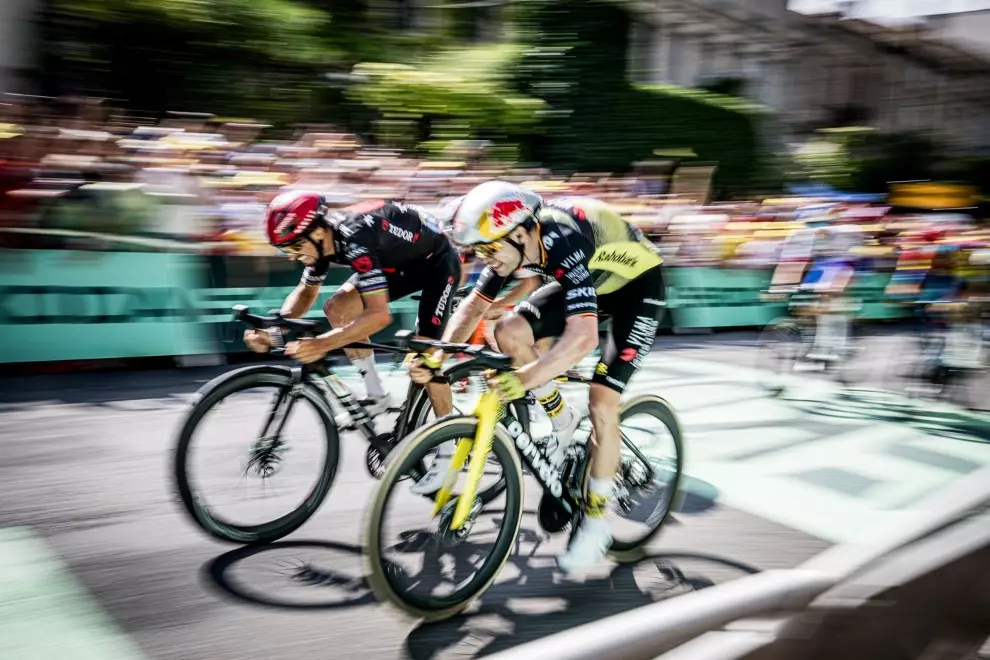Wilcox’s story is unique and, in many ways, representative of a growing number of women who reach their athletic peaks later in life. Her record-breaking ride has brought another wave of attention to the science behind women’s endurance, highlighting how female athletes often experience increased stamina and performance as they age.
There’s no doubt that Wilcox’s achievement deserves to be celebrated as an incredible standalone feat by a remarkable athlete. However, it also prompts a deeper exploration into emerging science around women’s bodies and the capacity they hold to push limits.
A record-breaking journey
It needs to be said right off the bat that Wilcox’s journey was far from smooth sailing. She faced illness, mechanical failures, and extreme weather conditions that would have tested the resolve of any athlete. Yet, her resilience was evident as she powered through, riding 139 miles on the fourth day while vomiting in torrential rain. For Wilcox, though, these hardships weren’t deterrents; they were part of the experience. “I had so much fun – felt like I could’ve just kept riding forever,” she shared on Instagram after her return to Chicago.
And if you follow cycling, you’ll know that this isn’t Wilcox’s first foray into ultra-endurance undertakings. She became the first woman to win the 4,200-mile TransAm Bike Race in 2016 and has broken records in gruelling races like the Tour Divide. These achievements, alongside her latest world record, have firmly established her reputation as a force willing to test her physical limits, highlighting how age and experience can contribute to exceptional endurance.
View this post on Instagram
The science behind female endurance
While men generally have greater muscle mass and higher levels of haemoglobin – factors contributing to raw strength and speed – women possess unique strengths in endurance that become more evident in ultra-endurance events. Research shows that women often excel in long-duration activities, such as ultra-marathons or cycling races like Wilcox’s record-breaking journey. This is partly due to metabolic differences; women tend to utilise fat more efficiently than men during long-term exercise, preserving glycogen stores and allowing for greater stamina.
In sports where events last for days or weeks, as in Wilcox’s case, mental endurance also plays a critical role. Studies suggest that women may have a higher tolerance for discomfort and pain during prolonged efforts, likely due to hormonal differences, especially as estrogen can provide anti-inflammatory effects and aid in recovery during endurance efforts.
Endurance and age: The late bloomers of sport
What’s particularly striking about Wilcox’s story is that she broke this world record at age 38. Far from the prime athletic years typically associated with men’s peak performance, endurance in women often peaks later in life. Research supports this idea: while men tend to reach their athletic prime in their mid-to-late 20s, women often experience peak endurance performance in their late 30s and even into their 40s.
Part of this comes down to pain management and mental resilience. Ultra-endurance events require physical strength, strategic pacing, self-discipline, and the ability to navigate emotional highs and lows – all qualities that tend to sharpen with age. Wilcox’s cycling career is a perfect example of this. After decades of pushing her body to its limits, she has honed the ability to endure even the most gruelling conditions, from flat tyres to extreme fatigue. Her story demonstrates how, for women, age can be an asset in sports that require more than just raw physical power.
Stories of survival and strength
Wilcox’s introduction to cycling came out of necessity. After rupturing her Achilles tendon during a 14-hour shift at a restaurant in Anchorage, she borrowed her mother’s bike to avoid putting weight on her foot. What started as a practical solution soon became a passion. Just two months later, she cycled 3,000 km from Montreal to Florida, camping in public parks and living on a shoestring budget. Over the next several years, she would cycle 100,000 miles across 45 countries, often navigating challenging terrains with minimal resources.
During this period, Wilcox began to develop the mental and physical toughness that would define her career. In one race, she rode for 24 hours straight, stopping only to briefly sleep under a tree. In another, she continued racing after a severe asthma attack forced her to seek medical help. “Everybody has their physical limits,” she noted. “Often, my legs feel fine, but I need air in my lungs.”
Her story reveals the key role of mental endurance in ultra-endurance sports. The ability to keep pushing when your body wants to stop – to ride through illness, sleeplessness, and pain – distinguishes athletes like Wilcox from the rest. This strength often grows with age and experience, making older athletes particularly suited for such extreme challenges.
Breaking down barriers
Wilcox’s achievements are part of a broader trend of women excelling in ultra-endurance sports. From ultra-running to long-distance cycling, women have increasingly set records and pushed boundaries in events traditionally dominated by men. Yet, despite these successes, female athletes still face scepticism and doubt, often being asked if their pursuits are “safe” or if they “need help.” As Wilcox pointed out, “The biggest barrier for women is that they’ve been doubted so often and for so long.”
In addition to her racing career, Wilcox works to break down these barriers by encouraging more women to participate in endurance cycling. She organises adventure programmes for teenage girls and has offered international scholarships to help women get into the sport. Her efforts to promote inclusivity reflect the growing recognition that endurance sports, far from being the exclusive domain of men, are areas where women can truly thrive — often at ages when many male athletes are winding down their careers.
Endless possibilities going forward
Lael Wilcox’s latest achievement is an inspiring reminder of the broader potential for women in ultra-endurance sports. As more women like Wilcox continue to break records and barriers, it’s becoming increasingly clear that endurance sports may well be the arena where women, particularly as they age, can truly shine. And as Wilcox herself might say, the journey is far from over – both for her and for the countless women she inspires around the world.




